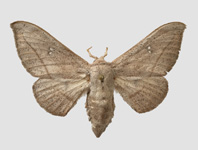Abstract
Trichobilharzia Skrjabin & Zakharov, 1920 is known as the most species-rich genus of the blood fluke family Schistosomatidae. To date, more than 40 species have been described, even though validity of some of them is questionable (Horák et al. 2002). Members of the genus use various birds as final hosts, but they attract attention mostly as causative agents of hypersensitive skin reaction (cercarial dermatitis or swimmer’s itch) in mammals including humans. As this is one of the
References
Blair, D. & Islam, K.S. (1983) The life cycle and morphology of Trichobilharzia australis n. sp. (Digenea: Schistosomatidae) from the nasal blood vessels of the black duck (Anas superciliosa) in Australia, with a review of the genus Trichobilharzia. Systematic Parasitology, 5, 89–117.
http://dx.doi.org/10.1007/BF00049237Brumpt, E. (1931) Cercaria ocellata, déterminant la dermatite des nageurs, provient d’une bilharzie des canards. Comptes Rendus Hebdomadaires des Séances de l'Académie des Sciences, 192, 612–614.
Horák, P., Kolářová, L. & Adema, C.M. (2002) Biology of the schistosome genus Trichobilharzia. Advances in Parasitology, 101, 57–63.
http://dx.doi.org/10.1016/s0065-308x(02)52012-1Horák, P., Mikeš, L., Lichtenbergová, L., Skála, V., Soldánová, M. & Brant, S.V. (2015) Avian schistosomes and outbreaks of cercarial dermatitis. Clinical Microbiology Reviews, 28, 165–190.
http://dx.doi.org/10.1128/CMR.00043-14ICZN (1999) International code of zoological nomenclature. Fourth edition. International Trust for Zoological Nomenclature, London, 306 pp.
La Valette de St. George, A. (1855) Symbolae ad trematodum evolutionis historiam. Dissertation, Berolius, 42 pp.
Neuhaus, W. (1952) Biologie und Entwicklung von Trichobilharzia szidati n. sp. (Trematoda, Schistosomatidae), einem Erreger von Dermatitis beim Menschen. Zeitschrift für Parasitenkunde, 15, 203–266.
http://dx.doi.org/10.1007/bf00260453Odening, K. (1996) What Cercaria ocellata actually is. Acta Parasitologica Turcica, 20 [Suppl 1], 387–397.
Rudolfová, J., Hampl, V., Bayssade-Dufour, C., Lockyer, A.E., Littlewood, D.T.L. & Horák, P. (2005) Validity reassessment of Trichobilharzia species using Lymnaea stagnalis as the intermediate host. Parasitology Research, 95, 79–89.
http://dx.doi.org/10.1007/s00436-004-1262-xSkírnisson, K. & Kolářová, L. (2008) Diversity of bird schistosomes in anseriform birds in Iceland based on egg measurements and egg morphology. Parasitology Research, 103, 43–50.
http://dx.doi.org/10.1007/s00436-008-0925-4Skrjabin, K.I. & Zakharov, N.P. (1920) Zwei neue Trematodengattungen aus den Blutgefässen der Vögel. (Beitrag zur Kenntnis der Helminthenfauna der Vögel Russlands) [in Russian] Izvestiya Donskogo Veterinarnogo Instituta, 2, 1–6.
Ssinitzin, D.T. (1910) Studien über die Phylogenie der Trematoden. 2. Bucephalus v. Baer und Cercaria ocellata De la Val. Zeitschrift für Wissenschaftliche Zoologie, 94, 299–325, pls. IX–X.
Szidat, L. (1942) Was ist Cercaria ocellata La Valette? Morphologische und entwicklungsgeschichtliche Untersuchungen über den Erreger der europäischen Cercarien-Dermatitis des Menschen. Deutsche Tropenmedizinische Zeitschrift, 46, 481–497, 509–524.
Taylor, E.L. & Baylis, H.A. (1930) Observations and experiments on a dermatitis-producing cercaria, and another cercaria from Limnaea stagnalis in Great Britain. Transactions of the Royal Society of Tropical Medicine and Hygiene, 24, 219–244.
http://dx.doi.org/10.1016/S0035-9203(30)92001-9Vogel, H. (1930) Cercarien-Dermatitis in Deutschland. Klinische Wochenschrift, 9, 883–886.
http://dx.doi.org/10.1007/BF01724254

